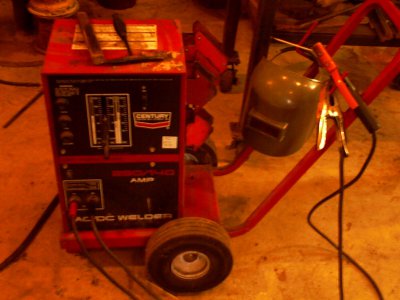- Joined
- Jul 29, 2011
- Messages
- 207
A number of years ago 7-10 ? it's been awhile, I brazed up a cast iron brake drum for a fellow to use as a pulley on a homemade bandsaw. I've only ever done this once with electric rod like that but it worked OK other than a lot of splatter. Has anyone else had experience with this type of rod and could you give advise on settings or other tips or projects you may have used this on???
Thanks, ~Chris
Thanks, ~Chris


